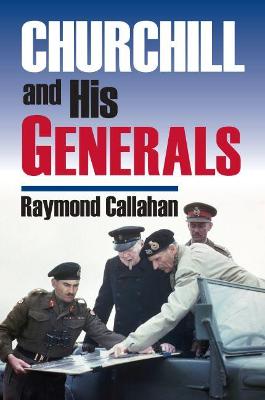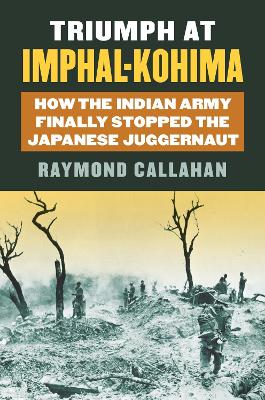Modern War Studies
2 total works
On the eve of World War II, the British army was more an international police force than a true combat-ready fighting machine. Raymond Callahan chronicles its trial-by-fire transformation in a new and unflinching look at Great Britain's top commanders in the field. Callahan reexamines the much-maligned performance of the British army in that war by reevaluating its commanders' victories and defeats, their leadership abilities and flaws, and their often rocky relationships with Prime Minister Winston Churchill, whose powerful presence looms over every page. Revisiting wartime theaters stretching from Southeast Asia across India through the Middle East, into North Africa, and across Europe, Callahan revises and expands our understanding of how British commanders - both the best and worst - led their troops and executed their strategies. Callahan explores the way Churchill, with his own ideas about the army's goals and concerned about the precariousness of his political fortunes, dealt with his generals, who often held views different from his own. He probes the relationship between Churchill's political goals and war aims, the army's capabilities, and its generals' battlefield performance, while assessing the roles of such leaders as Alan Brooke, Bernard Montgomery, Archibald Wavell, Claude Auchinleck, and Harold Alexander. He also reveals why William Slim should be regarded as the outstanding British commander of the war and Britain's best field commander since Wellington - and how other generals such as Neil Richie, Henry Wilson, and Oliver Leese exemplify the role of chance in history. Past criticism has tended to ignore both the obstacles confronting the army and its dramatic improvement by war's end. Callahan sets that record straight while offering insight into the evolution of the British wartime army within the contexts of coalition warfare, the constraints of a far-flung Empire, and Churchill's political concerns and desire to retain a British presence on the world stage. He considers problems posed by manpower, training, doctrine, equipment, and new military technologies and strategies as the army faced a multifront global war that pushed an already overextended fighting force nearly to the breaking point. ""Churchill and His Generals"" is the most comprehensive analysis of this wartime relationship, an account of institutional transformation under extreme stress that balances Churchill's own self-serving memoirs. It clearly demonstrates that what political leaders demand from their armies is less important than what those armies are designed to do - and that this oft-recurring disconnect lies at the root of much wartime civil-military tension.
In the spring of 1944, on the eastern front of India near the Burmese border, the seemingly unstoppable Imperial Japanese Army suffered the worst defeat in its history at the hands of Lieutenant General William Slim's British XIV Army, most of whose units were drawn from the little-esteemed Indian Army. Triumph at Imphal-Kohima tells the largely unknown story of how an army that Winston Churchill had once dismissed as "a welter of lassitude and inefficiency" came to achieve such an unlikely, unprecedented, and critical victory for the Allied forces in World War II.

